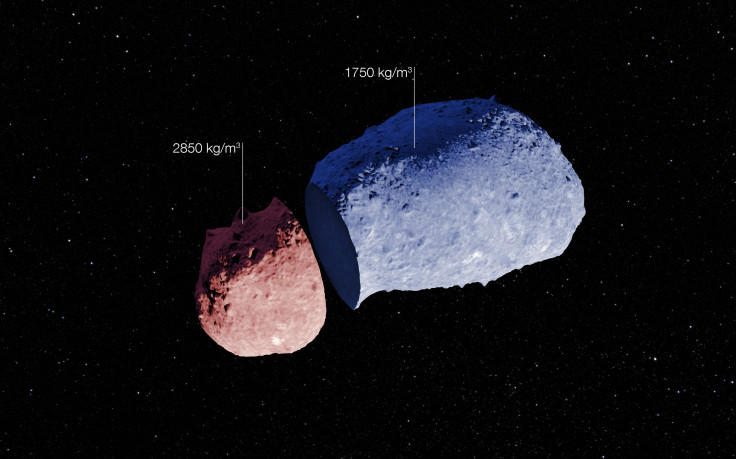Asteroid Autopsy: Astronomers Peer Into The Internal Structure Of These Celestial Objects
What is underneath the surface of an asteroid? Astronomers are asking that question as it could lead to new insights into these celestial objects as well as planet formation. Using data collected by the European Southern Observatory's New Technology Telescope, NTT, researchers have gained their first look at the internal structure of an asteroid.

The research was led by Stephen Lowry, from the University of Kent in England, and used observations from ESO's NTT and the Japan Aerospace Exploration Agency's, JAXA, Hayabusa spacecraft. The team focused on near-Earth asteroid 25143 Itokawa, using the detailed images taken of the object by Hayabausa and analyzing its rotation using images collected from 2001 through 2013 by the NTT.
Hayabusa arrived at Itokawa on Sept. 12, 2005, and landed on it briefly. As part of its mission, collected a sample from the asteroid. The asteroid explorer provided a close-up look at the asteroid, revealing surface features as well as its internal structure. The peanut-shaped Itokawa is believed to consist of two separate masses that have become attached; one mass is smooth and has a fine layer of dust on its surface while the second mass displays a rocky surface.
Lowry and his team determined Itokawa's spin rate by measuring the changes in brightness as the asteroid rotated. According to ESO, the spin rate can be affected by the heat generated by the asteroid. The process is called the Yarkovsky-O’Keefe-Radzievskii-Paddack (YORP) effect, and as sunlight hits the asteroid it gets turned into heat given from the surface of the object. Because of Itokawa's unusual shape, the heat emitted by the asteroid is not even, causing an increase in the spin rate. Researchers had theorized the YORP effect would lead to a decrease in the spin rate.
"We can see that Itokawa has a highly varied structure — this finding is a significant step forward in our understanding of rocky bodies in the solar system," said Lowry in a statement.

According to Lowry, this change is due to the different densities of the asteroid's two masses. Based on these observations, the researchers believe Itokawa was formed as the result of a collision between binary asteroids, also known as double asteroids. Binary asteroids are similar to binary stars in that they orbit a common center of mass.
By detailing the different densities of Itokawa, Lowry says it could lead to new insights in binary asteroid formation as well as improve future missions. Lowry said of analyzing the interior structure of an asteroid, "It could also help with work on reducing the danger of asteroid collisions with Earth, or with plans for future trips to these rocky bodies." The research was published in the journal Astronomy & Astrophysics.
An artist's concept of asteroid Itokawa, courtesy of ESO, can be viewed below.
© Copyright IBTimes 2025. All rights reserved.






















